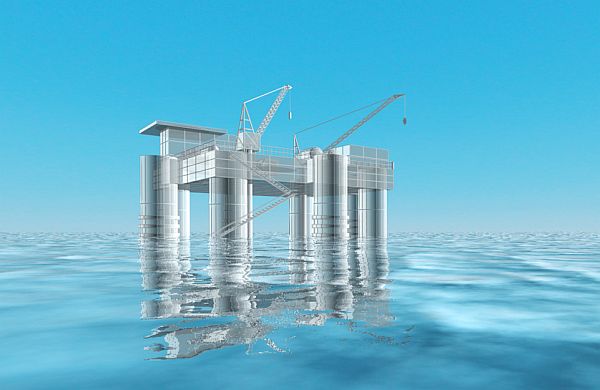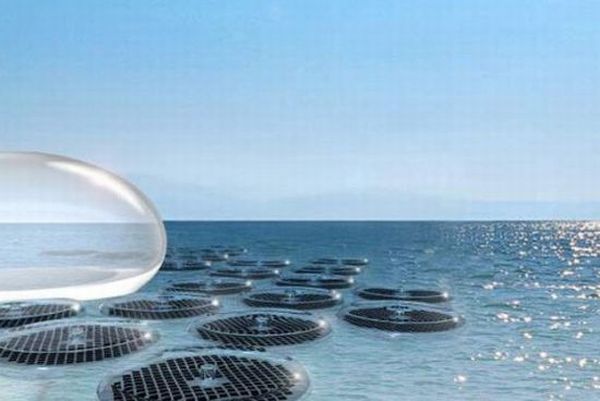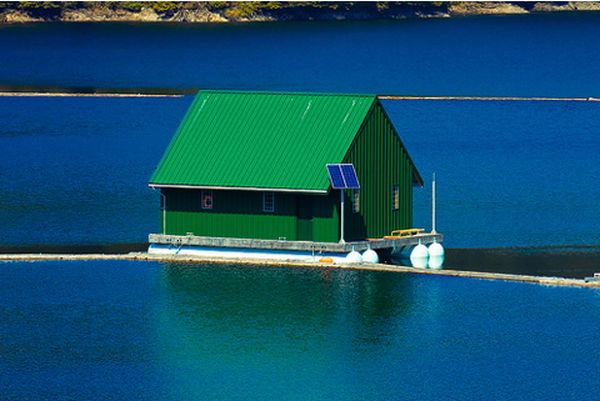Ocean Thermal Energy Conversion or OTEC is the solar energy collector system. It converts the solar radiation to electric power through the difference of cooler deep and warmer shallow to run a heat engine. The heat engine provides greater efficiency and power when they work with larger temperature difference. The temperature difference is highest in tropics between surface and bottom of the sea level. Notably, 10 to 100 timeâs greater energy than that of energy obtained by waves can be generated by Ocean thermal energy.

1. The good
Usually OTEC offers the greatest possibilities in the tropics because in the oceans the temperature difference between the deep water and surface is greatest. OTSC gives the energy with global amount that is 10 to 100 times more than any other ocean energy options such as wave power. It is an efficient way to provide continuously a base load supply to an electrical power generation system. The OTSC has the main technical challenge to generate significant amounts of the power efficiently by using small temperature difference. Still it is considered as an emerging technology. The first operational system of OTEC was built in 1930 in Cuba and generated 22kW. The theoretical maximum of temperature difference of 6 to 7% can be achieved with the modern designs, which provides the maximum Carnot efficiency. The largest was built in USA in 1999 generated 250kW. The Rankine cycle is most commonly used heat cycle in OTEC using a low pressure turbine.
Can this be better?
The Ocean Thermal Energy uses renewable, clean and natural resources. There is no involvement of fossil fuels; it uses the thermal gradient of water layers as basic sources. It provides totally clean and renewable energy. No fossil fuel is used thatâs why scope for carbon pollution tends to zero and oxygen molecules can be counted easily. It also benefits in a different way i.e. the technology can be used for production of fresh water and that is a great beneficial point for many islands facing fresh water scarcity problem. OTEC plants have the major advantage that it provides the variety of products. It is relatively clean and doesnât produce any pollutants that contribute to global warming.
2. The bad
Two types of systems are used, which are closed cycle and open cycle. Closed cycle OTEC uses the low boiling point liquid like ammonia or propane as an intermediate fluid. The electricity is generated through pushing the turbine by the intermediate fluid vapor, which is produced by boiling the intermediate fluid with the OTEC plant. This is done by warm sea water and finally the cold sea water is used to cool down the vapor. The Open cycle OTEC is also similar to the closed cycle. The difference is that in this type of OTEC the fluid is the sea water that pushes the turbine. Another type of OTEC is the Hybrid Cycle OTEC, which is theoretical method used to maximizing the use of ocean thermal energy. It uses two concepts where first one generates the electricity by using the closed cycle OTEC to create the necessary low pressure environment for the open cycle OTEC. In the second concept two open cycle OTEC are integrated so the amount of the original desalinated water will be twice.
Can this be avoided?
The OTEC has also some disadvantages instead of its benefits. It requires high cost of electricity production. So the main question arises that whether it is possible to turn this concept into reality in the near future, keeping in mind the less cost of electricity production with conventional methods to generate electricity. It had not been tested in a large scale thatâs why no energy company will put money in this project. The near shore marine ecosystem can be damaged with the construction of OTEC plants and lying of pipes in coastal waters.
3. The ugly
The ugly point of the OTEC is that the OTEC plants can be suitable for only those places where the temperature difference is at least 20 degrees between the ocean layers all around the year and the depth of the ocean should be much close to the sea shore. Another point of concern about OTEC, especially from environmentalists is that it can be the cause of destruction of reefs by setting up the OTEC facility on the ocean and thus, may be a severe imbalance in the marine ecosystem. So the companies are not ready to invest the required amount on as huge a project as this, whose pilot version are not tested for accuracy.
Why are we so critical?
An economic analysis is the another issue of OTEC, which indicates that ocean thermal energy conversion (OTEC) plants may be competitive in different markets over the next 5 to 10 years with different cost of diesel generated electricity and desalinated. It has many applications or uses. OTEC can be used to generate desalinate water, electricity and support deep water mariculture. It also provides aid in crop growing and mineral extraction as well as refrigeration and air conditioning.
The bottomline
The negativities can be kept covered, if there is an assurance of freshwater production and pollution free energy production, so the OTEC technology provides the benefits, which definitely outweigh the shortfalls.




